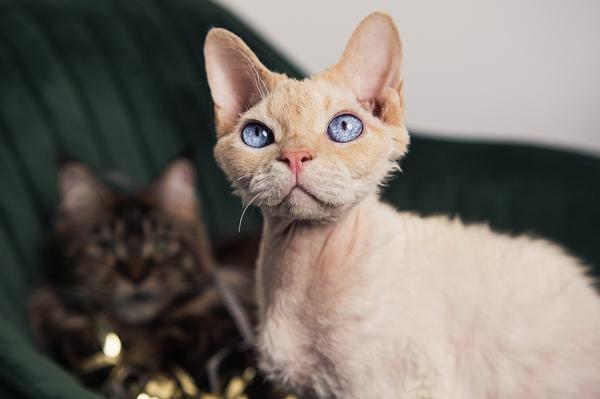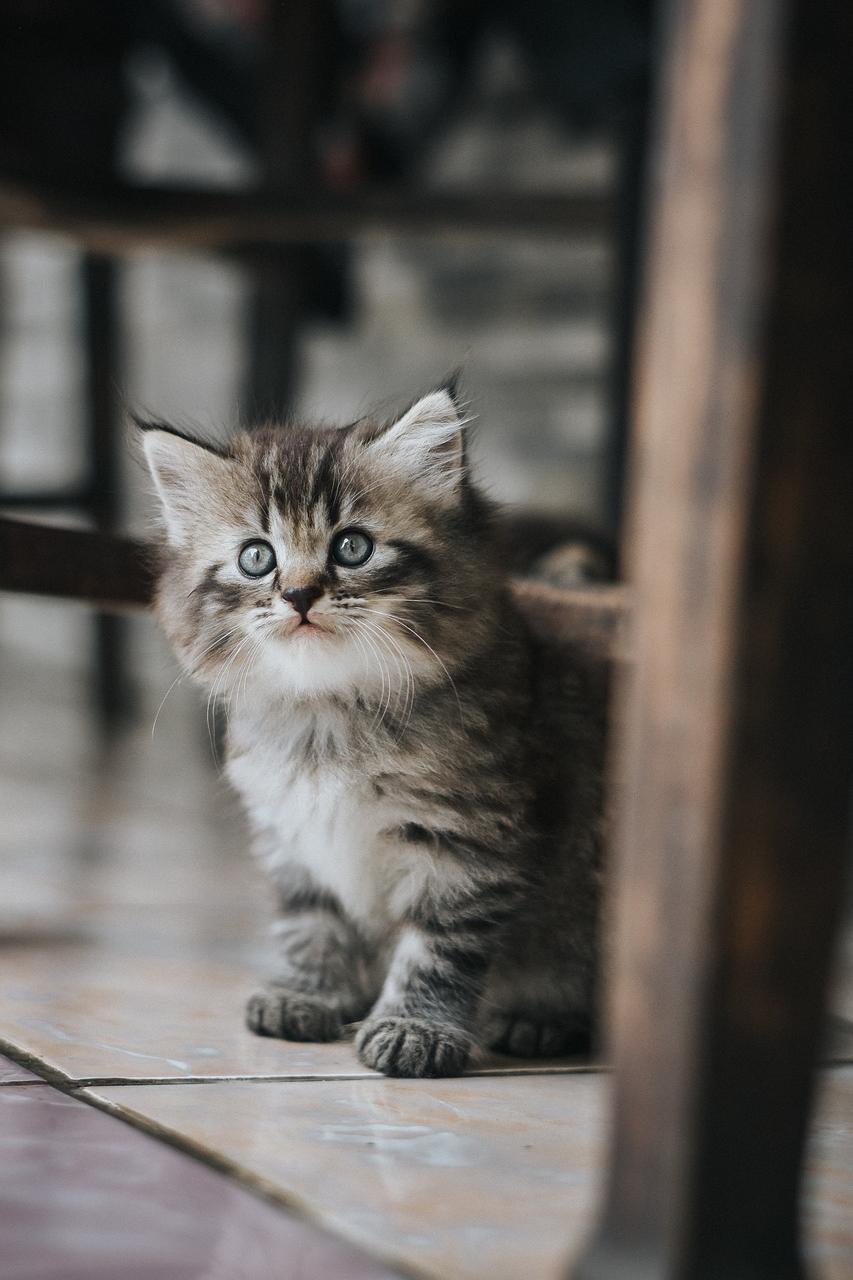Why Do Cats Purr When You Pet Them? (The Actual Reason)

You ever wonder why cats purr when you pet them?
I mean, what's up with that? 😕
It's like they're transmitting some secret feline code, whispering sweet nothings only they understand.
And let me tell you, I hear you.
I've been there, scratching my head in bewilderment, longing for answers.
But fear not, my curious friends!
Today, we embark on a journey to unravel this feline phenomenon.
Let's dive into the depths of purr-fection, shall we?
Unveiling the Purrs: Reasons Cats Purr and Their Meaning
You wanna understand why cats purr?
Well, here's a list of 10 reasons with their meanings:
- They're feelin' content and happy.
- Showin' how relaxed and comfy they are.
- Lookin' for your attention, food, or playtime.
- Calmin' themselves down when they're stressed or hurt.
- Talkin' to other cats in their language.
- Easin' any pain or discomfort they may have.
- Gettin' closer to their owners, bondin' and stuff.
- Greetin' their feline buddies that they know well.
- Learnin' how to purr as little kittens to talk to their mama.
- Findin' some comfort when they're stressed or anxious.
But hey, gotta mention that the exact meanin' behind a cat's purring ain't exactly known.
Different types of purrs might be sendin' different messages, includin' ones that need your urgent attention.
The way they purr - how loud it is, how fast, all that jazz - can change, where soft purrs usually mean they're happy.

Watchin' their behavior and what's goin' on around 'em is gonna help you figure out why they're purrin' like crazy.
So, next time you hear those adorable rumblings from your kitty, keep an eye on how they act and what's happenin' 'round 'em to crack the code of what they're tryin' to say to ya. 💬
And if you're still wondering why cats purr, I've got you covered! In my blog post, Why Does My Cat Purr Constantly, I delve into the possible explanations and solutions for constant purring.
The Science Behind a Cat's Purr
Cats communicate through purring, using their laryngeal muscles to create vibrations at varying frequencies. This unique form of communication allows them to express contentment and seek attention. Interestingly, purring also aids deaf and blind kittens by helping them locate their mother for nursing.
When a cat purrs, it's not just a pleasant sound, but a form of communication.
Cats use their laryngeal muscles to produce the purring sound, creating vibrations at a frequency ranging from 25 to 150 vibrations per second.
These vibrations serve a specific purpose and are not simply random noise.
One of these purposes is for cats to communicate with humans and other cats.
It's like their way of conveying that they are feeling good or seeking attention.
However, there's something even more fascinating about purring.

Purring also plays a crucial role in aiding deaf and blind kittens.
The consistent pattern and frequency of purring allow these kittens to feel the vibrations.
So, when a mother cat purrs, her tiny and vulnerable kittens can locate her to nurse.
Nature truly is remarkable, isn't it?
Therefore, the next time your feline companion starts purring, remember that it signifies more than just their enjoyment – it's their way of expressing happiness and ensuring the well-being of their offspring. 😺
Now, here's the deal - cats not only use their purring to communicate and care for their young, but it also has incredible healing properties.
Want to know how this remarkable ability works and what it could mean for you?
Keep reading to uncover the secret behind a cat's purr and its potential to alleviate pain and promote healing in humans too:
The Healing Power of a Cat's Purr
A cat's purr possesses an extraordinary ability to heal, I kid you not.
When you pet a cat and it begins to purr, it releases endorphins that have the power to alleviate pain and accelerate the healing process. Isn't that simply mind-blowing?
What's even more fascinating is that the frequency of a cat's purr, approximately 26 hertz, also plays a significant role in this healing phenomenon. Yeah, I agree, it doesn't sound all that fancy at first, but here's something that will blow your mind:
That seemingly ordinary purr can actually assist in healing bones and regenerating tissues. Cats, my friend, are nothing short of magical healers.
You must be wondering how it all works, right?

Well, the gentle vibration produced by their purring stimulates bone healing and tendon regeneration.
They've got some serious personal healing powers going on there.
So, my friend, the next time you're feeling down or grappling with the challenges of recovery from an injury, do yourself a favor – cozy up with your furry companion and allow their powerful purr to work its magic on you.
Never forget, cats aren't just adorable and affectionate companions; they're essentially little fur-clad doctors.
But guess what?
There's more to a cat's affectionate nature than meets the eye.
A Cat's Purr Could Benefit Humans
Being in the presence of a purring cat has a profound impact on your state of mind, alleviating stress and anxiety.

Cats have their methods for expressing love, like getting cozy and putting their derriere close to your facial region or gently nudging their adorable head onto you.
These gestures are their unique way of showering affection upon their human counterparts.
Why Do Cats Purr and Then Bite You?
Cats may purr and then bite as a way to communicate their overstimulation. Excessive petting can overwhelm them, leading to a rough purr as a warning. The subsequent bite signifies their need for space. Pay attention to your cat's tolerance and signs of overstimulation to ensure positive interactions.
Why do cats purr and then bite you?
Let me tell you, cats can be quite complex creatures.
They have their own unique ways of communicating with us humans.
One possible reason for the purr-and-bite combo is when they get overstimulated.
That's right, imagine being constantly petted. It may sound wonderful to us, but for some cats, it can be overwhelming.
When cats get too much petting, they might start purring in a rough manner.
It's like they're warning you, Hey, that's enough!
And what comes next?
Well, sometimes they follow up that purr with a good old bite.
A little bit of hostility, if you know what I mean.
It's their way of saying, I've had my fill, leave me alone!
So, my friend, you need to pay attention to your cat's tolerance for petting. Look out for signs of overstimulation like tail twitching or sudden aggression.
Make sure your interactions are positive and safe by petting gently and paying close attention to your furry companion's signals.
Understanding our feline friends takes time and patience.
But once you establish a bond, I guarantee you'll experience many amazing moments together filled with purrs.
Ending notes
Summary of Summaries:
- Cats purr to express contentment, happiness, relaxation, and sociability.
- Purring can be used to solicit food, affection, or playtime from their owners.
- Cats may also purr to calm themselves when stressed or injured.
- Purring can indicate a good mood and serve as a means of communication between cats.
- Different types of purring can convey specific messages.
- Kittens learn purring as a communication method from an early age.
- Cats use purring to bond with owners and greet other familiar cats.
- Observing a cat's behavior and context can help understand why they are purring.
- Purring is a vocalization produced by laryngeal muscles in the cat's throat.
- Purring serves as a practical purpose in guiding deaf and blind kittens to nurse.
- Purring releases endorphins that can ease pain and speed up healing.
- The frequency of a cat's purr aids in bone healing and tissue regeneration.
- Cats display affectionate behaviors like placing their rear end near your face.
- Overstimulation from constant petting can cause abrasive purring and hostile behaviors.
And that wraps up today's article.
If you wish to read more of my useful articles, I recommend you check out some of these: Why Does My Cat Like Her Nose Rubbed, Do Cats Purr When Stressed, Why Does My Cat Purr So Loudly, Why Do Cats Like to Be Patted on the Bum, and Why Do Cats Lick Their Noses
Talk soon,
-Sarah Davis